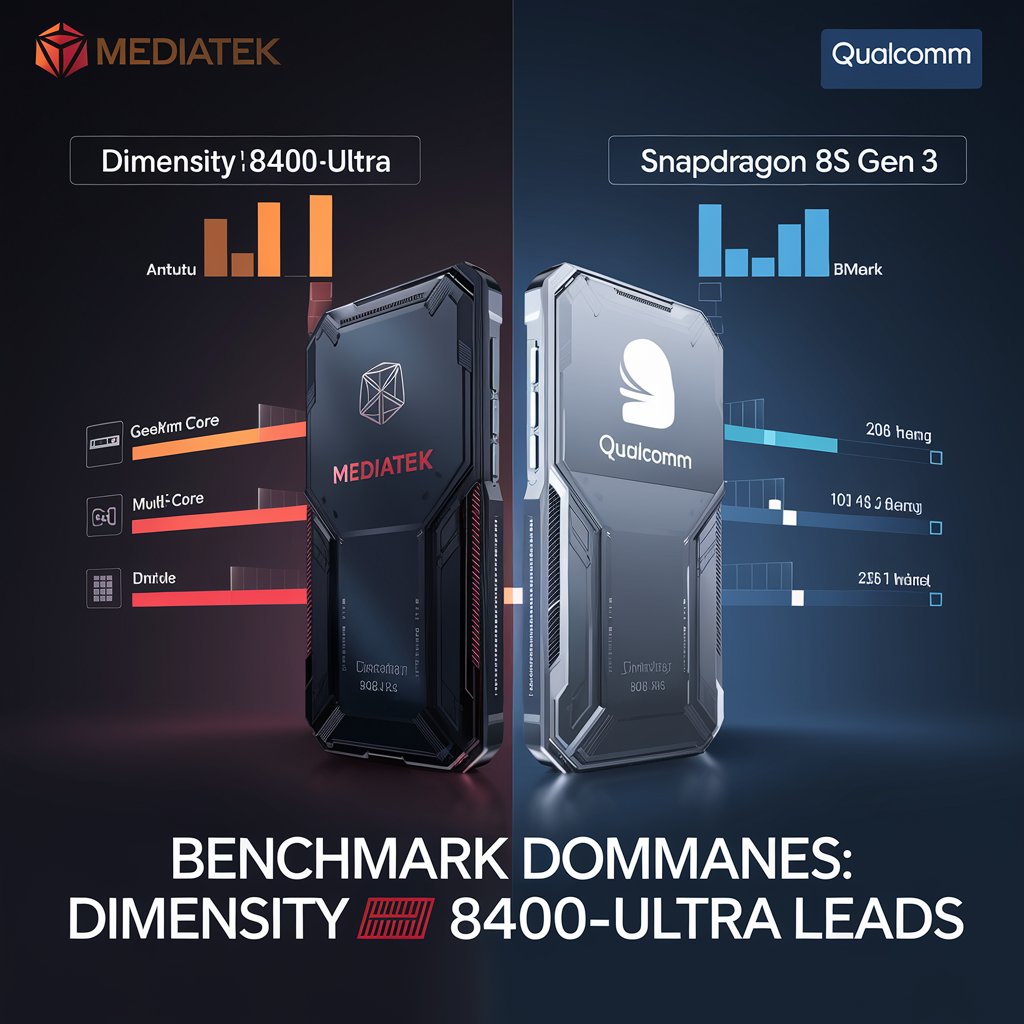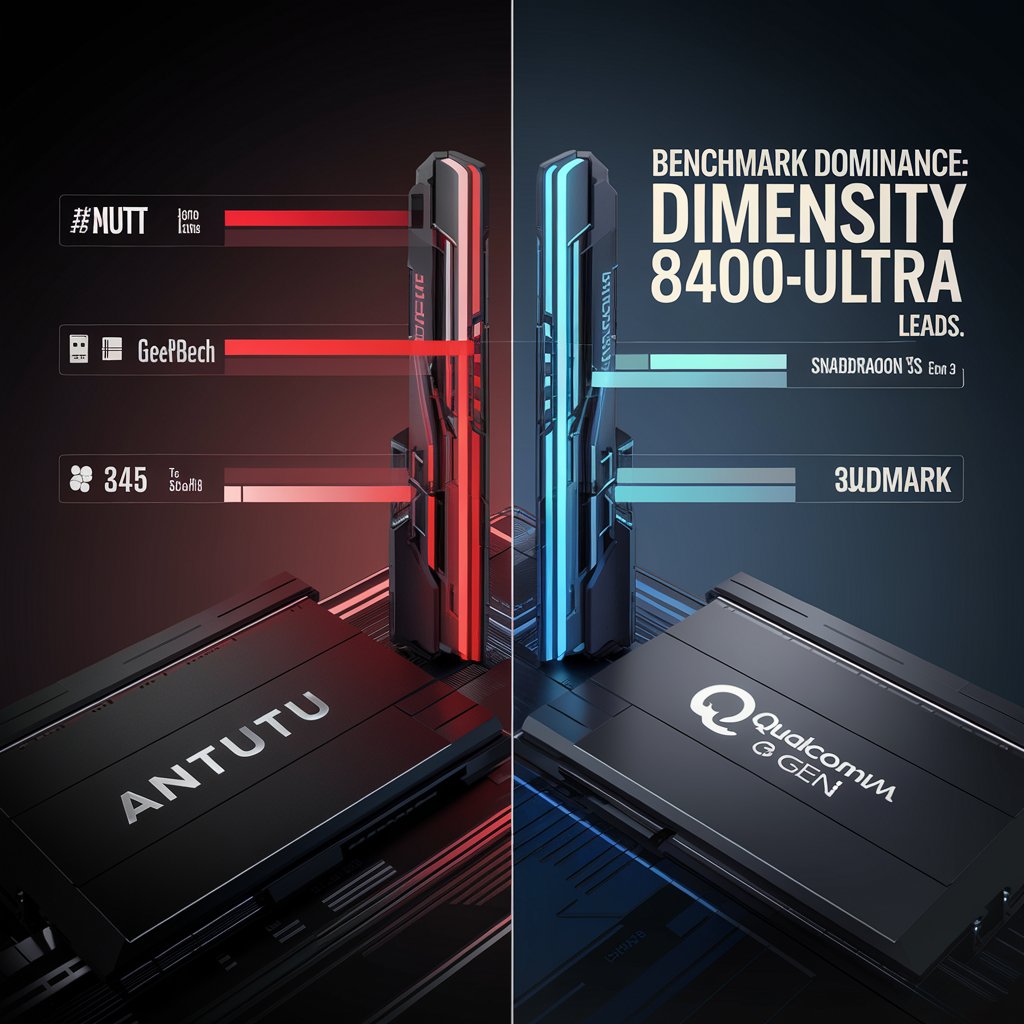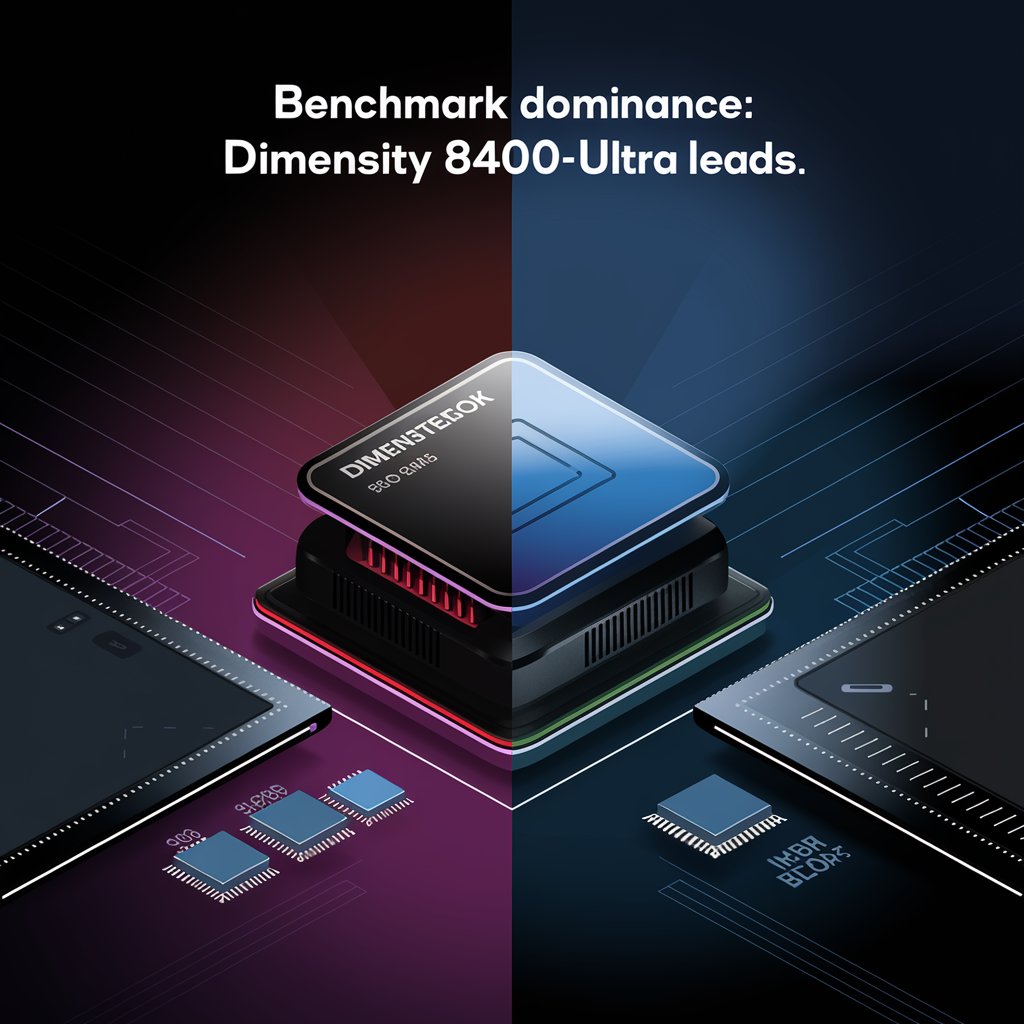
The smartphone chipset market is witnessing fierce competition, particularly in the upper mid-range and flagship segments. MediaTek and Qualcomm, two titans of mobile silicon, have recently unveiled their latest offerings: the MediaTek Dimensity 8400-Ultra and the Snapdragon 8s Gen 3. Both chips target premium devices, promising enhanced performance, efficiency, and cutting-edge features. This in-depth comparison examines their architectures, benchmark results, and real-world capabilities to determine which SoC (System-on-Chip) delivers superior performance.
Overview: Breaking New Ground in Chip Design
MediaTek’s Dimensity 8400-Ultra marks a significant milestone as the first upper mid-range chipset to adopt an all-big-core CPU configuration—a design philosophy previously reserved for flagship processors like the Dimensity 9300. This approach eliminates low-power efficiency cores, prioritizing raw performance for multitasking and demanding applications. The first device to feature this chip is Xiaomi’s Redmi Turbo 4, which leverages Xiaomi’s proprietary optimizations to refine the base Dimensity 8400 into the “Ultra” variant.
Qualcomm’s Snapdragon 8s Gen 3, meanwhile, sits just below its flagship Snapdragon 8 Gen 3, offering a balance of premium features and cost efficiency. It retains a hybrid CPU architecture but introduces newer Cortex-X4 cores for peak performance. Both chips are fabricated on TSMC’s 4nm process, ensuring advanced power efficiency and thermal management.
CPU Architecture: All-Big-Core vs. Hybrid Design
The CPU is the heart of any SoC, dictating how well a device handles tasks ranging from app launches to intensive workloads.
Dimensity 8400-Ultra: Bold Core Configuration
MediaTek’s chip features an octa-core CPU with eight Cortex-A725 cores, divided into three clusters:
- 1x Prime Core at 3.25GHz (for burst performance)
- 3x Performance Cores at 3.0GHz
- 4x Balanced Cores at 2.1GHz
This all-big-core design eliminates traditional efficiency cores (like Cortex-A520), which MediaTek argues reduces latency and improves responsiveness in multi-threaded scenarios. The Cortex-A725 cores, part of Arm’s 2023 refresh, offer a 10% IPC (Instructions Per Cycle) improvement over the older Cortex-A715, alongside better power efficiency.
Snapdragon 8s Gen 3: Flagship-Lite Hybrid Setup
Qualcomm’s Snapdragon 8s Gen 3 employs a more conventional 1+4+3 tri-cluster architecture:
- 1x Cortex-X4 Prime Core at 3.0GHz (for single-threaded tasks)
- 4x Cortex-A720 Performance Cores at 2.8GHz
- 3x Cortex-A520 Efficiency Cores at 2.0GHz
The inclusion of the Cortex-X4—a core designed for maximum single-threaded performance—gives Qualcomm an edge in tasks like app launches or gaming. However, its efficiency cores handle background processes, potentially conserving battery during lighter usage.
Key Differences
- Core Philosophy: MediaTek prioritizes multi-core throughput, while Qualcomm emphasizes single-threaded peaks.
- Clock Speeds: The Dimensity’s prime core runs slightly faster (3.25GHz vs. 3.0GHz), but Qualcomm’s Cortex-X4 has a larger L2 cache for complex tasks.
- Efficiency: MediaTek’s design risks higher power draw under load, whereas Qualcomm’s efficiency cores may better manage thermals in sustained workloads.
GPU Performance: Mali vs. Adreno
Graphics processing is critical for gaming, UI animations, and AI-driven tasks.
Dimensity 8400-Ultra: Mali-G720 MP7
MediaTek integrates Arm’s Mali-G720 MP7 GPU, a mid-tier configuration of the Mali-G700 series. The G720 architecture introduces Command Stream Frontend (CSF), reducing CPU overhead by 33% and improving shader performance. It supports advanced features like hardware-accelerated ray tracing and variable-rate shading (VRS), though these are more relevant for flagship GPUs.
Snapdragon 8s Gen 3: Adreno 735
Qualcomm’s Adreno 735 GPU is a scaled-down version of the Adreno 740 found in the Snapdragon 8 Gen 2. It retains support for Unreal Engine 5, Vulkan 1.3, and Snapdragon Elite Gaming features like HDR10+ rendering and reduced latency. Adreno GPUs are historically optimized for Android games, offering strong driver support and thermal efficiency.
Benchmark Insights
- 3DMark Wild Life Extreme: The Dimensity 8400-Ultra scores 4,086 points, outperforming the Snapdragon 8s Gen 3’s 3,161 points. This suggests MediaTek’s GPU excels in raw compute tasks.
- Real-World Gaming: Adreno GPUs often deliver smoother frame rates in popular titles like Genshin Impact due to better game engine optimizations.
Connectivity and Multimedia
5G and Modem
- Dimensity 8400-Ultra: Integrated MediaTek M80 modem with 5.1Gbps peak download speeds, sub-6GHz support, and dual-SIM 5G.
- Snapdragon 8s Gen 3: Snapdragon X70 modem with 6.5Gbps peak speeds, mmWave compatibility (region-dependent), and AI-enhanced signal management.
Wi-Fi and Bluetooth
- Dimensity: Wi-Fi 6 (802.11ax), Bluetooth 6.0 with dual antennas.
- Snapdragon: Wi-Fi 7 (802.11be) readiness, Bluetooth 5.4 with LE Audio support.
Camera and Imaging
- Dimensity: Supports up to 320MP single cameras, 4K HDR video recording, and MediaTek’s Imagiq 790 ISP with AI noise reduction.
- Snapdragon: 200MP photo capture, 8K HDR video, and Qualcomm’s Spectra ISP with real-time object segmentation.
AI and Machine Learning
Both chips feature dedicated NPUs (Neural Processing Units) for on-device AI tasks:
- Dimensity 8400-Ultra: MediaTek NPU 980 accelerates image processing, voice assistants, and generative AI models.
- Snapdragon 8s Gen 3: Hexagon NPU with tensor acceleration, optimized for Qualcomm’s AI Stack and popular frameworks like TensorFlow Lite.

In benchmarks like ETHZ AI Benchmark, Snapdragon chips often lead due to broader framework compatibility, but MediaTek’s NPU 980 excels in camera and video enhancements.
Benchmark Showdown
AnTuTu 10 (Overall Performance)
| Chipset | Score |
|---|---|
| Dimensity 8400-Ultra | 1,799,330 |
| Snapdragon 8s Gen 3 | 1,654,675 |
The Dimensity leads by 8.7%, reflecting stronger multi-core CPU and GPU performance.
Geekbench 6 (CPU Focus)
| Chipset | Single-Core | Multi-Core |
|---|---|---|
| Dimensity 8400-Ultra | 1,639 | 6,500 |
| Snapdragon 8s Gen 3 | 2,048 | 5,684 |
Qualcomm’s Cortex-X4 delivers a 25% single-core advantage, crucial for responsiveness. However, MediaTek’s all-big-core design dominates multi-threaded tasks by 14%.
3DMark Wild Life Extreme (GPU Stress Test)
| Chipset | Score |
|---|---|
| Dimensity 8400-Ultra | 4,086 |
| Snapdragon 8s Gen 3 | 3,161 |
MediaTek’s Mali GPU outperforms Adreno by 29%, though real-world gaming may favor Qualcomm’s optimizations.
Power Efficiency and Thermal Performance
While both chips use TSMC’s 4nm node, their architectures influence power consumption:
- Dimensity 8400-Ultra: The absence of efficiency cores may lead to higher heat generation during prolonged use, potentially throttling performance in compact devices.
- Snapdragon 8s Gen 3: Efficiency cores handle background tasks, reserving high-performance cores for bursts. This could translate to better battery life in mixed usage.
Conclusion: Which Chip Should You Choose?
The Dimensity 8400-Ultra shines in synthetic benchmarks, offering superior multi-core CPU performance and GPU compute capabilities. It’s ideal for users prioritizing raw power for multitasking, video editing, or emulation.
The Snapdragon 8s Gen 3, meanwhile, excels in single-threaded tasks, gaming optimizations, and connectivity features like Wi-Fi 7. It’s better suited for gamers and those valuing day-to-day smoothness.
Ultimately, the choice hinges on use cases:
- Dimensity 8400-Ultra: Content creators, power users needing sustained performance.
- Snapdragon 8s Gen 3: Mobile gamers, users seeking balanced efficiency and peak performance.

Both chips represent significant leaps in mid-tier silicon, pushing the boundaries of what’s possible in modern smartphones.
Also Read Below:
Outstanding Qualcomm Snapdragon 7 Gen 3 AnTuTu and Geekbench Scores